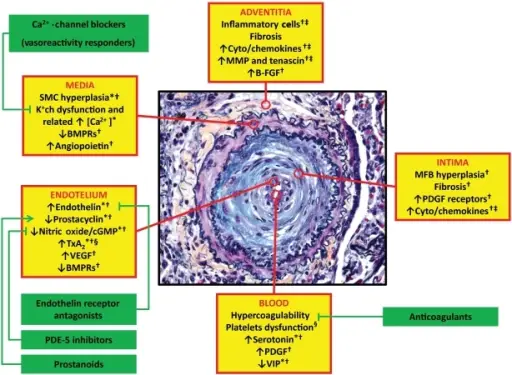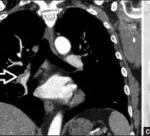
Obstructive remodelling of a small pulmonary artery in pulmonary arterial hypertension (increased thickness of the three vessel layers and severe lumen reduction are shown) and ongoing pathobiological processes in the different layers of the vessel wall (yellow boxes) and in the blood. Asterisks indicate the potential processes involved. Corrective interactions of the related approved therapeutic interventions are also reported (green boxes). *Vasoconstriction; †Proliferation/migration; ‡Inflammation; §Thrombosis. B-FGF, basic fibroblast growth factor; BMPR, bone morphogenetic protein receptor; [Ca2+], intracellular calcium concentration; K+ch, membrane potassium channels; SMC, smooth muscle cells; MFB, myofibroblasts; MMP, matrix metalloproteases; PDE-5, phosphodiesterase type 5; PDGF, platelet-derived growth factor; TxA2, tromboxane A2; VEGF, vascular endothelial growth factor; VIP, vasoactive intestinal peptide. The pathological picture is a courtesy of Dr Carol Farver, Cleveland Clinic. Pulmonary arterial hypertension: from the kingdom of the near-dead to multiple clinical trial meta-analyses. Galiè N, Palazzini M, Manes A - European heart journal (2010). Not Altered. CC.
Pulmonary diseases of vascular origin are diseases that occur in the bloodstream and the blood vessels are involved.
Examples of pulmonary diseases of vascular origin include:
- Pulmonary embolism
- Pulmonary hypertension
- Diffuse pulmonary hemorrhage syndromes



